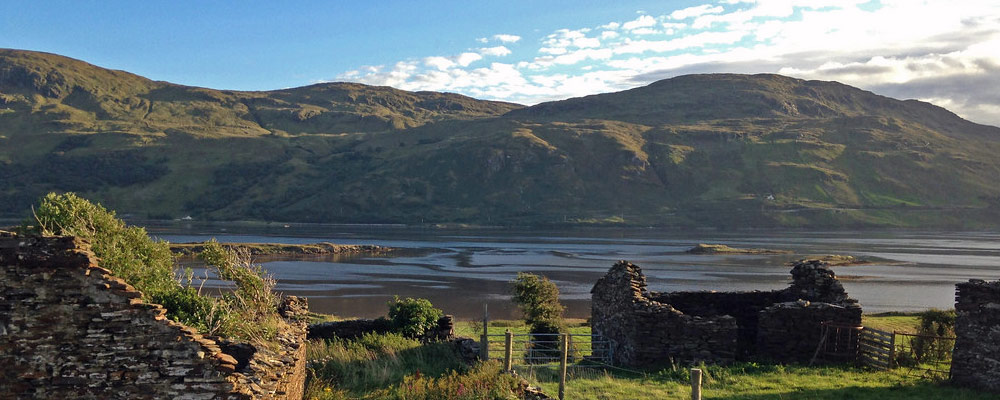A walk here in the late afternoon, when the sun’s rays light up the red cliffs can be stunning. The streams that run down the slopes into the ocean, whose sandy bed is dotted with grassy islets, form shiny meanders that change with the tide. On the other side of Loughros More Bay to the south, the steep slopes of the hills lit up by the rays of the setting sun create a stunningly beautiful picture.
History: The Duguesa Santa Ana
By September, 1588, Armada had been sailing for almost four months, ever since they left Lisbon, on its mission to depose Queen Elizabeth and restore the Catholic faith to England. None of this happened. The fleet were ordered to return to Spain and give Ireland as wide a berth as possible. However by the middle of the month, the Armada’s losses amounted to about twenty ships and perhaps one thousand men. But in the second half of the month, disaster on an unprecedented scale struck the Spanish fleet, more than doubling its tally of lost ships and increasing its list of dead six-fold. The Duguesa Santa Ana was an Andalusian ship and like so many others would not have been equipped to weather the Atlantic storms which had been particularly vicious that year.
The plight of the Duguesa Santa Ana, like some of the twenty-six ships of the Spanish Armada, really started off the Mayo coast. Battered by winds, and with its crew at starvation point and many injured, the Santa Ana ran for shelter into Blacksod Bay, Co. Mayo on the 21st September, 1855. The ship found safe anchorage on the northern arm of the bay. But another ship, La Rata Santa Maria Encoronada, under the command of Don Alonzo de Leyva, often described as the ‘Armada’s finest flower’ took shelter on the southern arm. This was more open to the fierce westerlies and was to be her downfall. Following her shipwrecking, de Leyva and his crew joined the already battered Santa Ana following the Channel battles and over ten weeks of strenuous sailing since leaving Corunna in northern Spain. When she left Blacksod Bay, setting a course for Scotland, the ship of 900 tons and with an original crew of 357, now had a crew of some 900 men crammed into every conceivable corner. Some one hundred miles (160km) to the north-east, the Santa Ana was caught by another storm and driven aground in Loughros More Bay.
By this time, Alonzo de Leyva had been crippled by a flailing capstan. Nevertheless, he was carried ashore and once again began to supervise the transfer ashore of men, arms, food and equipment and fortified the deserted castle on Kiltoorish Lake. The Spaniards were now in MacSweeney Banagh country who supplied them with food and water. More importantly, they informed the Spaniards about the presence of three Armada ships anchored in Killybegs harbour, some 20 miles (32km) to the south. De Leyva’s crew marched to what they had hoped would be their salvation, only to find that one of the three ships remained, the others had sunk. The gallant little ship, the galleass Girona, was all that greeted the luckless de Leyva – before the next month had ended he would be shipwrecked a third time – and on the third time he would die.
Although the Girona had been battered and mauled by successive gales, she could still float and she could still sail. Her rudder, which had been smashed by the hammering waves, was repaired using timbers from one of the stricken vessels. In mid-October, the Girona set sail for Scotland. But, just off the Co. Antrim coast near Dunluce, the Girona gave up her long struggle against the Atlantic. Of the estimated 1,300 men who crowded her decks, only nine men were washed ashore more dead than alive. With this tragic shipwreck went the flower of Spanish chivalry, the wealthy, the brave and Don Alonzo de Leyva.

